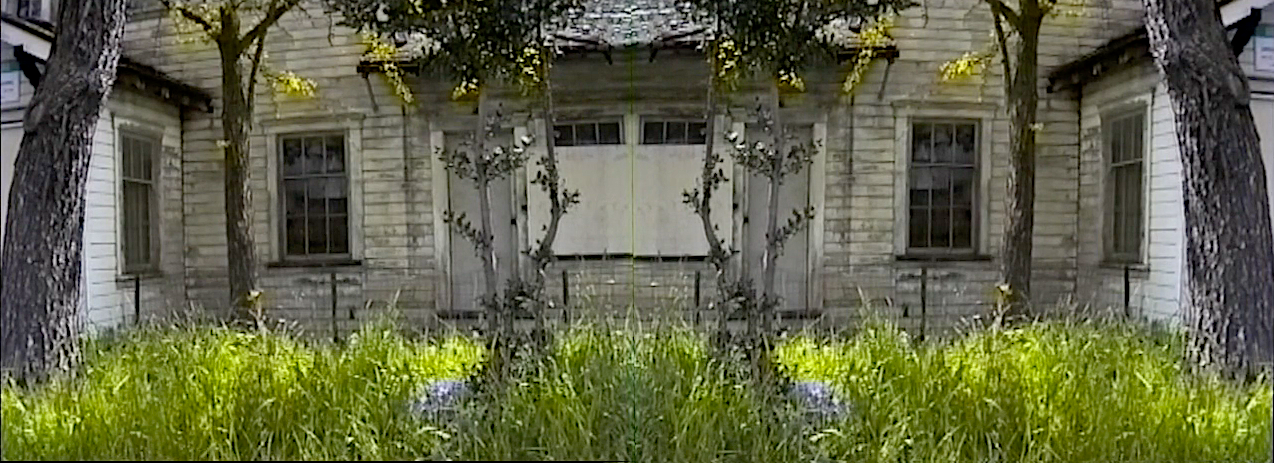 |
||
| Still
Moving 2020 update by Dan Senn See Video |
Four
Sides (1998) of a Japanese Language School Video soundtrack "Eight Ways to Fix a Windmill" Duration = 13:23 - |
|
| Still Moving: Four Sides of a Japanese
Language School was videotaped in 1998 and intended to be
viewed, when possible, over 2-4 monitors turn on access. This version,
made in 2020 at Waterhouse Studio, achieves the original pixel
resolution as well as these intentions to some extent. The video is
in-camera edited. The sound track was not made for this video but has
been used since 1998. Simultaneities between the music and visual
events occur by chance. In the early 20th Century, Tacoma, Washington had become home to a large and thriving population of Japanese immigrants. By 1912, the children of these immigrants were losing their native language and customs. To hedge against this, a Japanese LanguageSchool was formed. After a day at public school, students attended what was known to them as Nihongo Go Gakko where they learned to speak, read and write the old language as well as Japanese calligraphy, lore, customs and culture. By 1922, due to the success of the school, a building was constructed in the middle of the growing Japanese community, one which included 5 grocery stores, a Japanese language newspaper, 24 laundries, 14 hotels, 6 restaurants, and 17 barbershops. About a third of the workers in the local lumber industry were Japanese and in nearby Fife, Japanese farmers cultivated more than 700 acres of land, growing vegetables for the entire region. Religious organizations included the Japanese Baptist Church, the Japanese Methodist Church, and the Japanese Buddhist Church. By the early 1940s, except for the imprint of the Japanese Language School, the descendants of these immigrants were culturally indistinguishable from other Americans kids. |
Then, in 1942, Pearl
Harbor was attacked and they became distinguishable again. “For their own protection,” Tacoma’s Japanese-Americans were rounded up at the this Language School and sent off to internment camps. When they returned 4 years later, their homes and businesses were gone. The once concentrated and productive community ceased to exist. Homes were left to decay and then razed, and in the midst of this horror, the Japanese Language School, its doors forever locked, stood untouched for sixty years, molested only by stone throwers and interlopers. As a newcomer to Tacoma in 1992, I found Nihongo Go Gakko while out walking, and was drawn to its simplicity, its apparent soundness, and the beauty of its four sides each which had weathered uniquely over the years losing paint according to the four seasons of the Pacific Northwest. In this work I commemorated this noble structure and past by silently-rhythmically mapping its exqusite exterior. In September of 2004, Nihongo Go Gakko, the Japanese Language School, was razed to make way for new construction at the University of Washington at Tacoma In counterpoint to the visual rhythms, Ihave added an improvised performance of my instrument called a Fayfer Harp. |
Dan
Senn (Prague-Watertown) is an
intermedia artist working in music composition and production, kinetic
sound sculpture, experimental and documentary film. He has been a
professor of music and art in the United States and Australia and
travels internationally as a lecturer, performer and installation
artist. He lives in Prague where he directs the Echofluxx festivals,
and Watertown, Wisconsin, the USA, with his partner-collaborator,
Caroline Senn. Dan's work moves freely between expressive extremes and
languages depending upon the aesthetic joust at hand. Dan is cofounder
of Roulette Intermedium in New York City, Cascadia Composers of
Portland Oregon, and the Echofluxx media
festivals in Prague. (read more). A high resolution and full sized video is available for download from the artist. Listen to video with headphones or a full spectrum speaker system. Visit the artist's site |